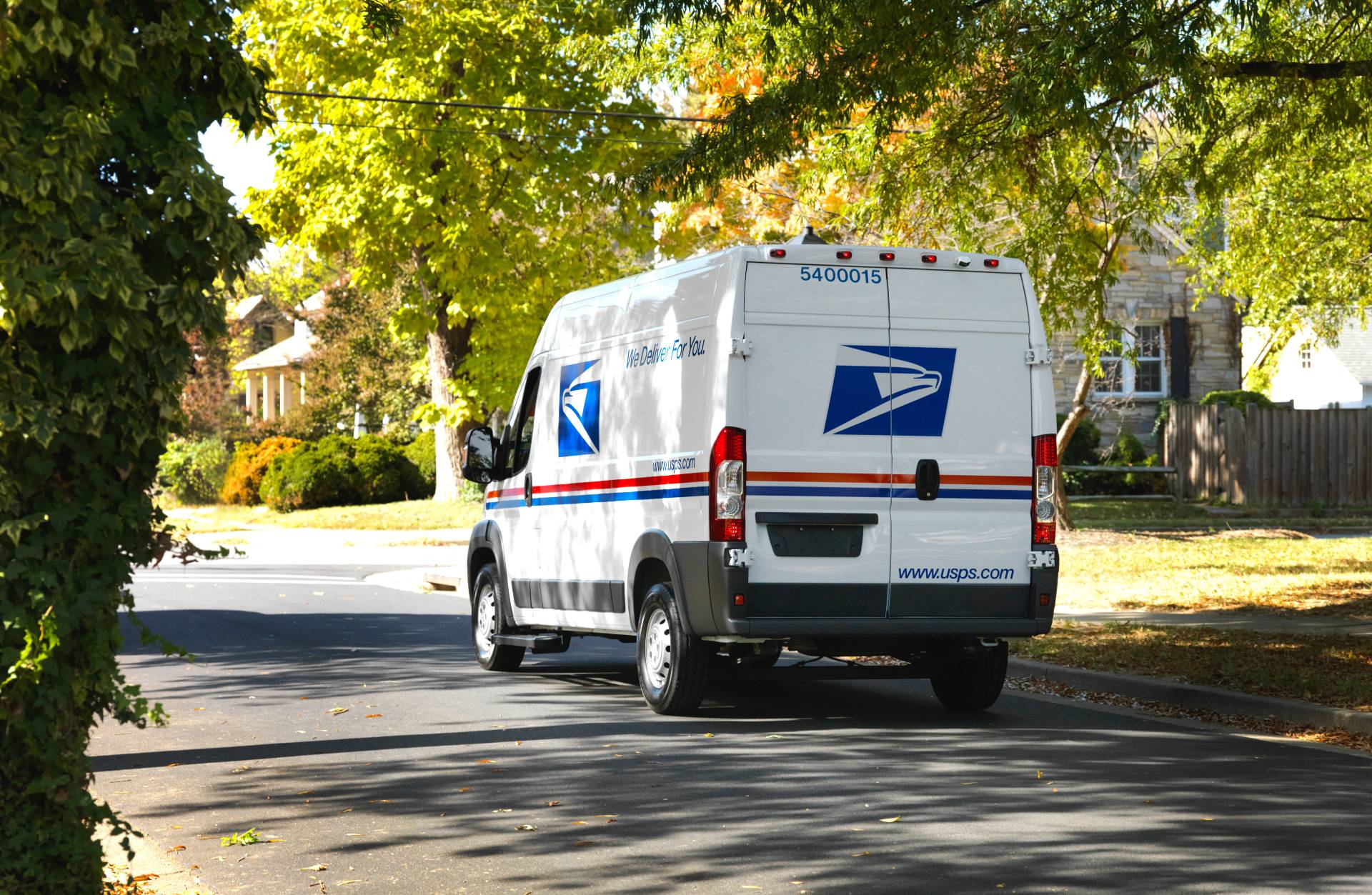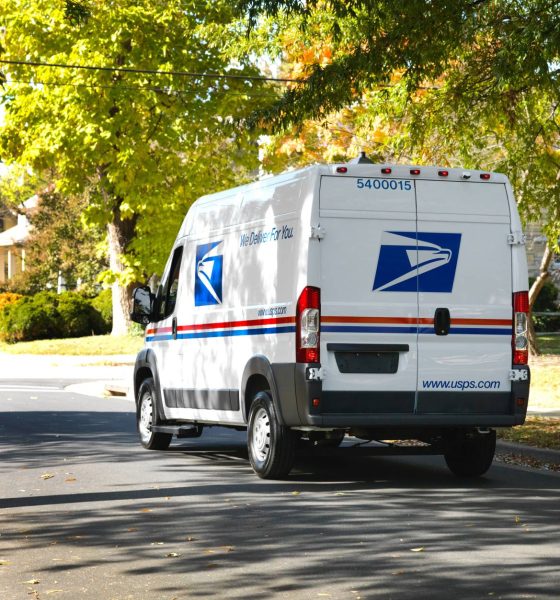The United Auto Workers union, sixteen states, and four environmental groups recently filed lawsuits against the United States Postal Service (USPS). The groups aim to stop the Postal Service’s plan to purchase and produce gas-powered delivery vehicles to update its fleet.
Background
The USPS announced it would spend up to $11.3 billion on up to 165,000 gas-powered NGDVs. The Biden Administration urged the Postal Service to reconsider its plans. President Biden had ordered federal agencies to phase out the purchase of gas-powered vehicles, and the USPS makes up a third of the U.S. government fleet.
In March, the USPS received criticism from U.S. lawmakers in the House Oversight Committee for its gas-powered Next Generation Delivery Vehicles (NGDV). The Committee sent a letter to the USPS Inspector General requesting an investigation into the agency’s NGDV order. According to the Committee’s letter, the Environmental Protection Agency (EPA), the White House Council for Environmental Quality (CEQ), and numerous environmental stakeholders were concerned that the USPA did not meet NEPA obligations with its gas-powered NGDV fleet.
The USPS responded to EPA feedback with a record of decision (ROD), which outlined the Postal Service’s decision to purchase and deploy 50,000 to 165,000 NGDVs over the next ten years. The agency stated that the NGDV fleet would be a mix of ICE and battery electric delivery vans. Electric vehicles would make up at least 10% of the agency’s fleet. However, the Postal Service also determined that ICE NGDVs were the “most achievable” replacements for its existing fleet.
USPS Lawsuits by States
As per Reuters, sixteen states, led by New York and California, filed a lawsuit against the USPS for its flawed and unlawful environmental analysis of the NGDV program. The lawsuit also accuses the Postal Service of signing the contracts to purchase the gas-powered NGDV before completing a draft environmental review.
According to the CEQ, the Postal Service’s final review for the NGDV program was “flawed in some ways that cannot be so easily remedied.” For example, USPS estimated that the gas-powered NGDVs would get 29.9 miles per gallon, but the EPA discovered that the vehicles would only get 14.7 miles per gallon or less.
UAW and NRDC Lawsuit
Besides the states lawsuit, the UAW filed a joint lawsuit with the Natural Resources Defense Council (NRDC), claiming the USPS “failed on multiple levels” when it evaluated and finalized the contract for the NGDVs. The two parties demand that the agency stop producing the next-generation delivery vehicles. As per the complaint, the UAW and NRDC stated that the NGDV contract is “based on an unlawfully deficient environmental analysis issued after the Postal Service had already decided on a course of action.”
The two parties also criticized the agency’s Environmental Impact Statement (EIS). The UAW and NRDC claim that the Postal Service did not consider the impact NGDV production — opposed to the operation — would have on the local environment. The EIS did not disclose that the vehicles would be produced in South Carolina by Oshkosh Defense, a Wisconsin-based contractor.
“With this contract, USPS and Oshkosh Defense abandoned the Wisconsin workers that built the company and failed taxpayers with a sham process to evaluate the environmental and community impacts of these vehicles. The USPS’s Next Generation Delivery Vehicle is an opportunity for the Biden administration to reverse-court and make real investments in both a cleaner future and good union jobs The contract as it currently stands fails on both accounts. It’s time to halt production and start the procurement process over,” said Ray Curry, president of the United Auto Workers.
The Teslarati team would appreciate hearing from you. If you have any tips, reach out to me at maria@teslarati.com or via Twitter @Writer_01001101.

Elon Musk
Starlink passes 9 million active customers just weeks after hitting 8 million
The milestone highlights the accelerating growth of Starlink, which has now been adding over 20,000 new users per day.

SpaceX’s Starlink satellite internet service has continued its rapid global expansion, surpassing 9 million active customers just weeks after crossing the 8 million mark.
The milestone highlights the accelerating growth of Starlink, which has now been adding over 20,000 new users per day.
9 million customers
In a post on X, SpaceX stated that Starlink now serves over 9 million active users across 155 countries, territories, and markets. The company reached 8 million customers in early November, meaning it added roughly 1 million subscribers in under seven weeks, or about 21,275 new users on average per day.
“Starlink is connecting more than 9M active customers with high-speed internet across 155 countries, territories, and many other markets,” Starlink wrote in a post on its official X account. SpaceX President Gwynne Shotwell also celebrated the milestone on X. “A huge thank you to all of our customers and congrats to the Starlink team for such an incredible product,” she wrote.
That growth rate reflects both rising demand for broadband in underserved regions and Starlink’s expanding satellite constellation, which now includes more than 9,000 low-Earth-orbit satellites designed to deliver high-speed, low-latency internet worldwide.
Starlink’s momentum
Starlink’s momentum has been building up. SpaceX reported 4.6 million Starlink customers in December 2024, followed by 7 million by August 2025, and 8 million customers in November. Independent data also suggests Starlink usage is rising sharply, with Cloudflare reporting that global web traffic from Starlink users more than doubled in 2025, as noted in an Insider report.
Starlink’s momentum is increasingly tied to SpaceX’s broader financial outlook. Elon Musk has said the satellite network is “by far” the company’s largest revenue driver, and reports suggest SpaceX may be positioning itself for an initial public offering as soon as next year, with valuations estimated as high as $1.5 trillion. Musk has also suggested in the past that Starlink could have its own IPO in the future.
News
NVIDIA Director of Robotics: Tesla FSD v14 is the first AI to pass the “Physical Turing Test”
After testing FSD v14, Fan stated that his experience with FSD felt magical at first, but it soon started to feel like a routine.

NVIDIA Director of Robotics Jim Fan has praised Tesla’s Full Self-Driving (Supervised) v14 as the first AI to pass what he described as a “Physical Turing Test.”
After testing FSD v14, Fan stated that his experience with FSD felt magical at first, but it soon started to feel like a routine. And just like smartphones today, removing it now would “actively hurt.”
Jim Fan’s hands-on FSD v14 impressions
Fan, a leading researcher in embodied AI who is currently solving Physical AI at NVIDIA and spearheading the company’s Project GR00T initiative, noted that he actually was late to the Tesla game. He was, however, one of the first to try out FSD v14.
“I was very late to own a Tesla but among the earliest to try out FSD v14. It’s perhaps the first time I experience an AI that passes the Physical Turing Test: after a long day at work, you press a button, lay back, and couldn’t tell if a neural net or a human drove you home,” Fan wrote in a post on X.
Fan added: “Despite knowing exactly how robot learning works, I still find it magical watching the steering wheel turn by itself. First it feels surreal, next it becomes routine. Then, like the smartphone, taking it away actively hurts. This is how humanity gets rewired and glued to god-like technologies.”
The Physical Turing Test
The original Turing Test was conceived by Alan Turing in 1950, and it was aimed at determining if a machine could exhibit behavior that is equivalent to or indistinguishable from a human. By focusing on text-based conversations, the original Turing Test set a high bar for natural language processing and machine learning.
This test has been passed by today’s large language models. However, the capability to converse in a humanlike manner is a completely different challenge from performing real-world problem-solving or physical interactions. Thus, Fan introduced the Physical Turing Test, which challenges AI systems to demonstrate intelligence through physical actions.
Based on Fan’s comments, Tesla has demonstrated these intelligent physical actions with FSD v14. Elon Musk agreed with the NVIDIA executive, stating in a post on X that with FSD v14, “you can sense the sentience maturing.” Musk also praised Tesla AI, calling it the best “real-world AI” today.
News
Tesla AI team burns the Christmas midnight oil by releasing FSD v14.2.2.1
The update was released just a day after FSD v14.2.2 started rolling out to customers.

Tesla is burning the midnight oil this Christmas, with the Tesla AI team quietly rolling out Full Self-Driving (Supervised) v14.2.2.1 just a day after FSD v14.2.2 started rolling out to customers.
Tesla owner shares insights on FSD v14.2.2.1
Longtime Tesla owner and FSD tester @BLKMDL3 shared some insights following several drives with FSD v14.2.2.1 in rainy Los Angeles conditions with standing water and faded lane lines. He reported zero steering hesitation or stutter, confident lane changes, and maneuvers executed with precision that evoked the performance of Tesla’s driverless Robotaxis in Austin.
Parking performance impressed, with most spots nailed perfectly, including tight, sharp turns, in single attempts without shaky steering. One minor offset happened only due to another vehicle that was parked over the line, which FSD accommodated by a few extra inches. In rain that typically erases road markings, FSD visualized lanes and turn lines better than humans, positioning itself flawlessly when entering new streets as well.
“Took it up a dark, wet, and twisty canyon road up and down the hill tonight and it went very well as to be expected. Stayed centered in the lane, kept speed well and gives a confidence inspiring steering feel where it handles these curvy roads better than the majority of human drivers,” the Tesla owner wrote in a post on X.
Tesla’s FSD v14.2.2 update
Just a day before FSD v14.2.2.1’s release, Tesla rolled out FSD v14.2.2, which was focused on smoother real-world performance, better obstacle awareness, and precise end-of-trip routing. According to the update’s release notes, FSD v14.2.2 upgrades the vision encoder neural network with higher resolution features, enhancing detection of emergency vehicles, road obstacles, and human gestures.
New Arrival Options also allowed users to select preferred drop-off styles, such as Parking Lot, Street, Driveway, Parking Garage, or Curbside, with the navigation pin automatically adjusting to the ideal spot. Other refinements include pulling over for emergency vehicles, real-time vision-based detours for blocked roads, improved gate and debris handling, and Speed Profiles for customized driving styles.










